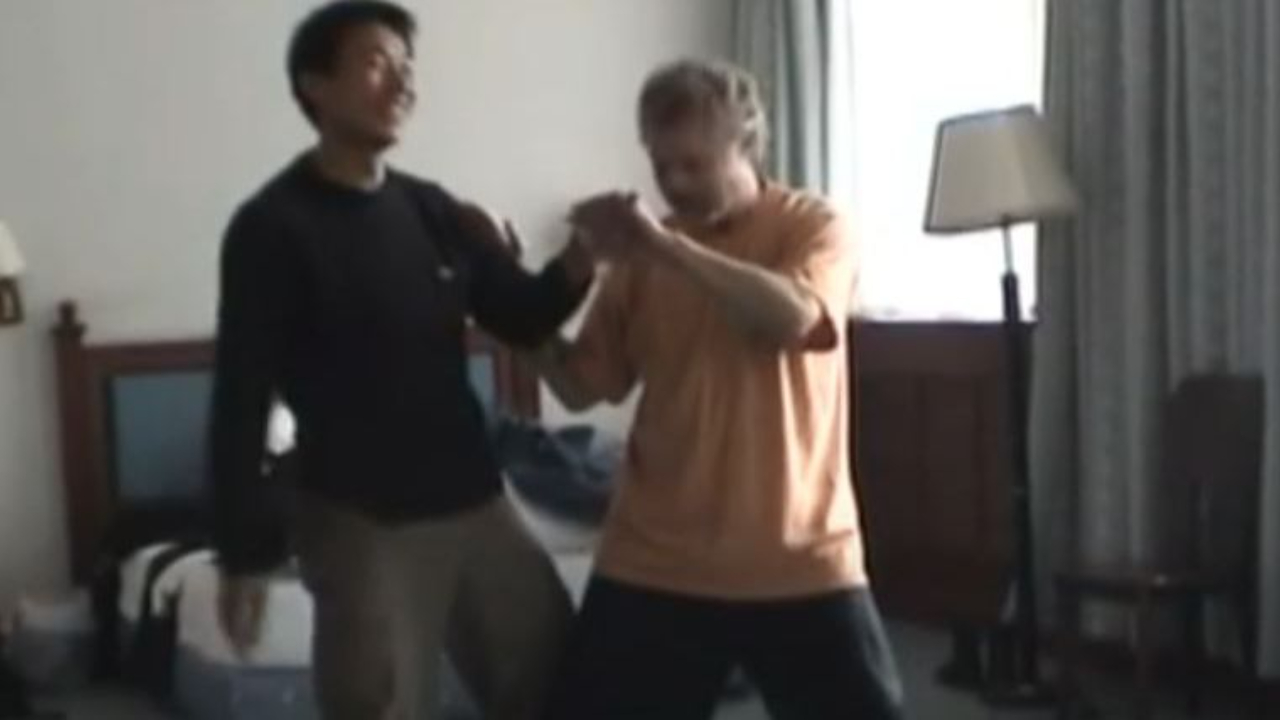Chen Bing Gives My Former Teacher A Lesson in Taiji Push Hands

My former Taijiquan teacher, Mark Wasson, spent a lot of time in the Chen Village training with members of the Chen family, including Chen Xiaowang, Chen Xiaoxing, and Chen Bing.
On one visit, the weather was bad so Chen Bing came to Mark's hotel room to practice push hands.
Taiji Grappling and Taking Advantage of Your Opponent's Energy

Anyone who reads this blog regularly knows that it is a mistake to interpret the term "energy" in some mystical way. Energy can simply mean "force" when discussing the energy an opponent is directing at you.
Energy can also mean "method" to describe a way of dealing with the force your opponent is directing your way. In other words, Cai Jin (Pluck Energy) describes a method of plucking or jerking to put your opponent off-balance. There is no actual "energy" called Cai in your body.
Many Westerners are inclined to believe things literally -- Adam and Eve, ghosts and psychics, etc. -- and so mythology has developed around the energy of the internal arts. You don't gain skill by increasing chi, your "chi" increases as you work like hell, gain experience, insight, and develop skill as you do in any sport, any physical endeavor, any trade or profession.
I love the grappling skills associated with the body mechanics of Taiji -- how to feel my partner's energy and take advantage of it to...
Leading into Emptiness in Tai Chi Push Hands

One of my favorite internal arts principles is "leading into emptiness." It's a good concept not only for physical self-defense but also for emotional and verbal self-defense.
In push hands practice, one of your primary goals is to soften, change, and counter when force is coming at you. By leading the force into emptiness, you set up your opponent for a counter.
So when force is coming straight in toward you, roll it to the side. If the attack is low, keep it moving lower. If it's a high attack, move it higher. If it is aimed at your chest, "pocket" it. Lead it into emptiness. Move it to where it won't find a target.
Sometimes, someone pushes on you. Using "empty force," or "Kong Jin" in Chinese terminology, you would give your opponent's push some resistance, but then you suddenly release your tension and "empty." It's like pulling the floor out from under your opponent. By leading them into emptiness, they go totally off-balance, giving you a chance to counter.
Sometimes, leadin...
Push Hands Workshop Part One

We had a great push hands workshop on Saturday in Davenport, Iowa. About 7 or 8 members of the online internal arts school were there. The workshop was videotaped for other members. I started putting it on the school's website today.
We went over 6 patterns of Chen tai chi push hands, starting with single hand push hands.
Push hands has several benefits; it helps develop sensitivity, it shows you the weaknesses in your form, and it teaches you to change in response to an opponent. It involves joint locks, strikes, and takedowns.
According to Grandmaster Chen Xiaowang, push hands can help you discover the weaknesses in your movement that put you in a vulnerable position. You learn how to soften and deflect and how to exert force at the right opportunity. You learn how to remain in a strong position relative to your opponent.
All of the internal strength skills apply to push hands -- using the ground path, maintaining peng jin, using whole-body movement and silk-reeling. Push hand...
